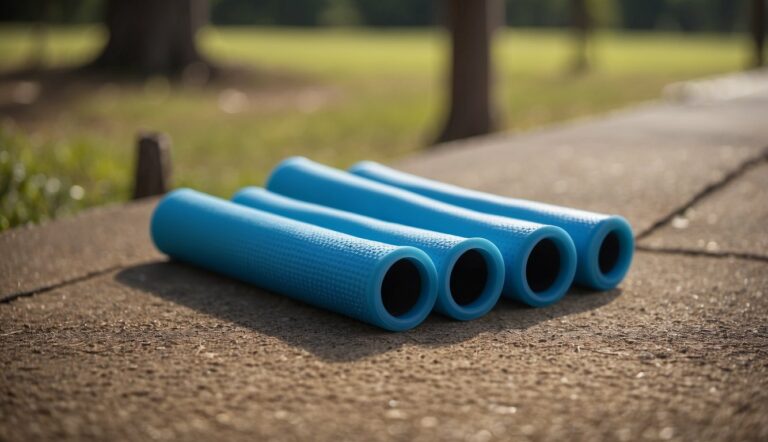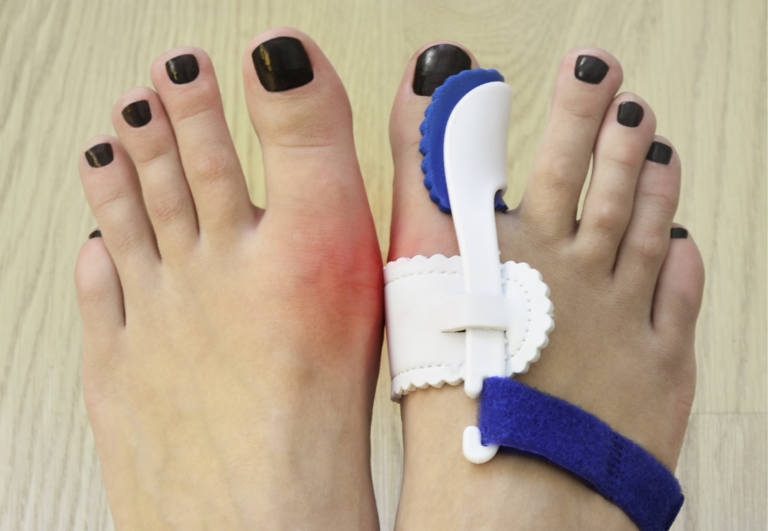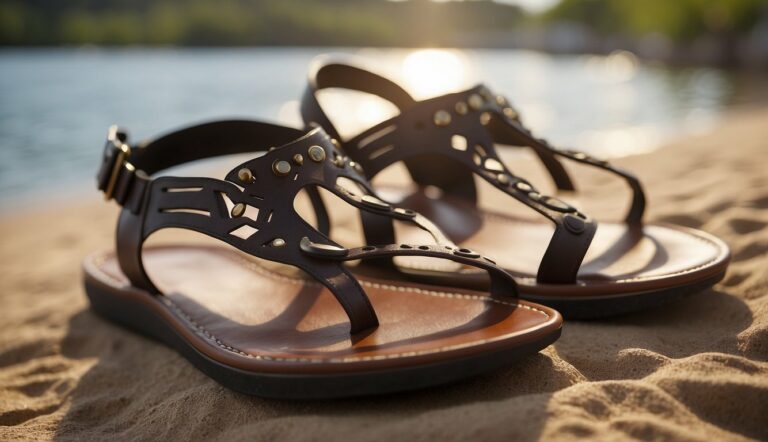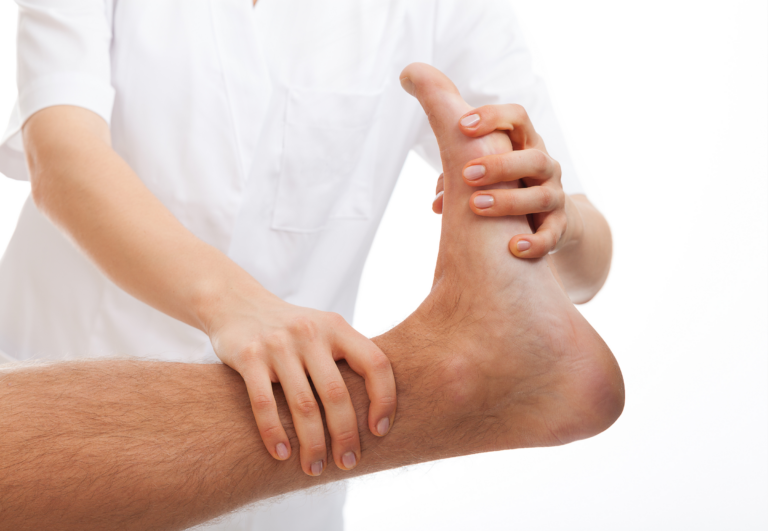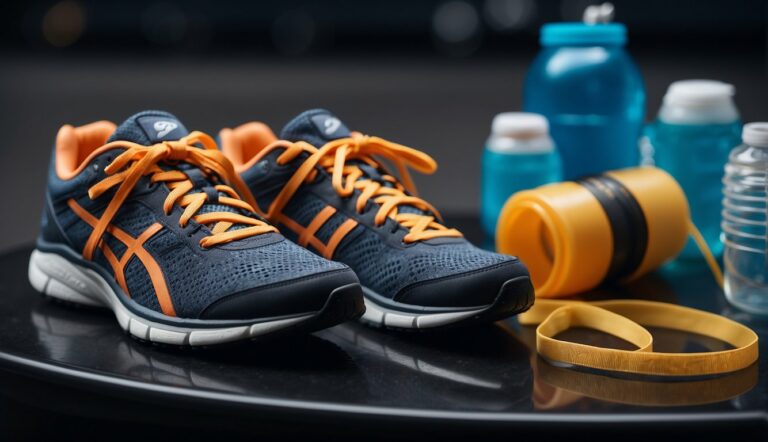Toe Spacer Training for Athletes: Enhancing Performance and Foot Health
In my experience working with athletes, toe spacers have emerged as a simple yet effective tool for enhancing foot strength and stability. Designed to separate the toes, these devices can help improve an athlete’s balance, proprioception, and overall foot mechanics. Many athletes, from runners to weightlifters, have started incorporating toe spacers into their training routines with the goal of unlocking their full performance potential and reducing the risk of foot-related injuries.
Knowing how important it is to maintain strong, mobile feet for various athletic activities, I’ve observed that using toe spacers can contribute to a better grounding and gripping capability. This not only aids in balance and stability during performance but also supports the foot’s natural alignment and spacing. By investing time in training with toe spacers, athletes may experience immediate effects on dynamic balance and range of motion in the ankle, which can be particularly beneficial during warm-ups and pre-competition preparation.
It’s also evident that toe spacers are not just for rehabilitation but are being adopted as a proactive measure in an athlete’s training arsenal. Introducing them slowly allows the feet to adapt and muscles to strengthen over time, fostering a foundation that could enhance performance across a variety of sports. While I’m not offering medical advice, my understanding and hands-on involvement with athletes lead me to recommend considering toe spacers as part of a comprehensive training program.
Toe Spacer Training for Athletes – an Overview
Toe spacer training for athletes is aimed at improving foot mechanics, strength, and flexibility, which can contribute to better overall athletic performance.
Here’s an overview of how athletes might incorporate toe spacers into their training regimen:
- Enhanced Foot Mechanics: Toe spacers can help correct the alignment of the toes and encourage a more natural foot position. This can lead to improved foot mechanics during athletic movements, such as running or jumping.
- Increased Balance and Stability: By aligning the toes and spreading them apart, toe spacers can increase the base of support for the foot. This can enhance an athlete’s balance and stability, which is beneficial in almost every sport.
- Strengthening Intrinsic Foot Muscles: Toe spacers are believed to help strengthen the intrinsic muscles of the feet. Stronger foot muscles can improve an athlete’s ability to perform balance poses, run without pain, and execute movements that require strong and stable feet.
- Improved Circulation: Proper toe alignment can also improve blood flow in the feet, which is crucial for healing and performance. Better circulation may contribute to faster recovery times after intense training or competition.
- Injury Prevention: By promoting better foot mechanics and strengthening the feet, toe spacers can potentially help reduce the risk of common athletic injuries, such as ankle sprains and stress fractures.
- Recovery Aid: Athletes may also use toe spacers during recovery periods after training sessions or competitions to help the feet relax and restore their natural shape, potentially speeding up the recovery process.
For athletes considering toe spacer training, it’s important to start gradually and allow the feet to adapt to the spacers. It’s also advisable to consult with a coach, trainer, or healthcare professional experienced in sports medicine to ensure that the toe spacers are being used correctly and effectively as part of a comprehensive training program.

Toe Spacers and Their Benefits
Toe spacers offer a straightforward solution for athletes seeking to improve foot health and performance. These devices realign toes and enhance foot function.
Toe Health Fundamentals
I’ve found that maintaining proper toe alignment is crucial for overall foot health. Toe spacers assist with correcting the positioning of toes, often crowded by narrow footwear. They help alleviate pressure and can minimize the development of deformities like bunions.
- Comfort: Ensures toes do not overlap, reducing friction and discomfort.
- Toe Alignment: Promotes natural toe spacing, leading to better balance and stability.
- Circulation: Aids in improved blood flow through the feet, which is beneficial for healing.
Toe Spacer Material Benefits
The majority of toe spacers I’ve used are made of silicone or gel, materials that provide flexibility and a snug fit. They mimic the softness of human tissue, making them comfortable to wear during long training sessions or even at rest.
- Silicone/Gel Benefits:
- Durability: Resistant to wear and bending, lasting longer.
- Hypoallergenic: Lower risk of skin reactions.
- Hygiene: Easy to clean, preventing buildup of bacteria.
Biomechanics and Athletic Performance
By using toe spacers, athletes can gain a competitive edge through enhanced foot strength and biomechanics. I’ve noticed how they contribute to better balance and stability during dynamic movements. Additionally, the increase in toe splay supports a more solid foundation, which can enhance overall athletic performance.
- Biomechanical Improvements:
- Flexibility and Mobility: Greater range of motion in foot muscles and ligaments.
- Foot Strength: Training with toe spacers makes the intrinsic foot muscles work harder, increasing strength.
- Arch Support: Better toe alignment can indirectly enhance the natural arch of the foot.
Proper Selection and Usage of Toe Spacers
Finding the right toe spacers involves prioritizing fit and comfort, while understanding their use is a straightforward process involving a few key steps. Regular maintenance ensures longevity and hygiene.
Assessing Fit and Comfort
When choosing toe spacers, fit is paramount. The device should sit snugly between the toes without causing discomfort or pinching, yet firm enough to maintain toe separation. Comfort can be determined by the material, which often ranges from silicone to medical-grade gel—both known for flexibility and skin-friendliness.
- Different sizes are available to accommodate various foot structures.
- Look for toe spacers that complement natural alignment, avoiding those that force toes into unnatural positions.
- Testing the spacers while wearing barefoot shoes or those with a wide toe box can help mimic real-life use and comfort.
Step-by-Step Guide for Usage
- Start with clean feet and toe spacers for optimal hygiene.
- Gently insert the toe spacer between each toe, ensuring a secure fit without overstretching.
- Begin by wearing them for short periods and gradually increase as your feet adjust.
- Use them during both static and dynamic activities to maximize the benefits of improved balance and foot alignment.
Maintenance and Hygiene
To keep your toe spacers effective and hygienic:
- Wash them regularly with soap and water to prevent bacterial build-up.
- Dry them thoroughly before the next use to maintain material integrity.
- Store in a cool, dry place when not in use.
Remember that easy to clean characteristics are crucial for an athlete’s tool, so opt for materials that won’t degrade or lose shape after washing.
Incorporating Toe Spacers Into Athletic Training
As an expert in toe spacer training, I know how crucial they are for improving foot health and overall athletic performance. They are not just a trend; they are a tool for enhancing stability, power, and proprioception in athletes.
Warm-Ups and Cool-Downs
Warm-up practices are essential to prepare the body for the intensity of a workout. Integrating toe spacers during these activities can enhance the stretching effect, especially for runners, where foot health is critical. I recommend the following:
- Start with 5 minutes of toe spacer wear during warm-ups, focusing on gentle foot stretching.
- Gradually increase to 10-15 minutes, as comfort allows.
For cool-downs, toe spacers can aid in recovery by realigning the toes and relieving pressure after rigorous activity.
Strength and Flexibility Exercises
Toe spacers can bolster strength and flexibility routines, important to an athlete’s gym regimen. Specifically:
- Foot massage: With spacers in place, use a massage ball to roll out the soles, improving flexibility.
- Toe curls and spreads: Enhance foot muscle strength with these exercises while wearing toe spacers.
Progressive overload is key; increase the difficulty of exercises as strength improves.
Barefoot and Balance Training
Barefoot training with toe spacers hones balance and proprioception—the body’s ability to sense movement, action, and location. Here’s how to utilize them:
- Include balance exercises, such as single-leg stands, on a soft surface with toe spacers.
- Increase duration as balance improves, aiming for a blend of barefoot activities to harness foot muscles’ full potential.
Regular use is crucial—consistency with toe spacers leads to better stability and power during athletic performance.
Addressing Common Foot Ailments
Dealing with common foot ailments such as bunions, hammertoes, and plantar fasciitis can be challenging for many athletes. I have found that incorporating toe spacers into one’s routine can play a critical role in both prevention and management of these issues.
Prevention and Management
Bunions and Hammertoes: Toe spacers can help in realigning toes to their natural position, potentially preventing the progression of bunions (hallux valgus) and hammertoes.
- Bunions: Characterized by a bony bump at the base of the big toe, they can cause discomfort and affect balance.
- Hammertoes: Often resulting from muscle imbalance, they can be mitigated by improving toe alignment.
Metatarsalgia and Overlapping Toes: Regular use of toe spacers can distribute weight more evenly across the foot, reducing the risk of metatarsalgia (pain in the ball of the foot) and preventing overlapping toes.
| Condition | How Toe Spacers Help |
|---|---|
| Bunion | Realignment of big toe |
| Hammertoe | Promoting proper toe alignment |
| Plantar Fasciitis | Alleviating stress on the plantar fascia |
| Overlapping Toes | Separating and realigning toes |
| Corns/Calluses | Reducing friction by maintaining toe separation |
| Arthritis/Neuromas | Enhancing foot mechanics to ease joint and nerve pain |
Toe Spacers as a Rehabilitative Tool
Inflammation and Foot Injuries: In my use of toe spacers, they have demonstrated their value as a rehabilitation aid by helping reduce inflammation and complementing recovery from various foot injuries.
- Plantar Fasciitis: The stretching effect of toe spacers may assist in relieving the tension and pain caused by plantar fasciitis.
- Post-Injury: They are also an excellent tool to maintain toe dexterity and prevent stiffness during the rehab phase.
Correct Toes for Pain Relief: By promoting correct toe alignment, toe spacers can alleviate foot pain, often providing relief from conditions such as corns, calluses, arthritis, and neuromas.
- Rehabilitation Benefits:
- Encourages proper toe alignment
- Aids in reducing foot pain and inflammation
- Complements physical therapy exercises
In my experience with foot ailments and toe spacer training, I’ve seen firsthand how these simple devices can offer immense benefits in both preventive care and rehabilitation of common foot issues.
Choosing the Right Toe Spacers
In my experience, finding the right toe spacers is crucial for athletic performance and foot health. Different types may suit different needs, so let’s explore what to consider and some specific recommendations.
Factors to Consider
When purchasing toe spacers, buyers should assess several key factors to ensure they make a wise choice. The material, typically silicone, gel, or rubber, is fundamental for durability and comfort.
Silicone spacers are generally durable and offer a balance between rigidity and flexibility. Gel options are soft and may be more comfortable for extended wear but might not last as long. Rubber spacers can be more affordable but sometimes less comfortable.
Consistent use is essential, so it’s important to consider how toe spacers fit with your gear. For instance, they should work well with minimalist footwear and leave enough room if you’re using insoles for shock absorption. The design should not hinder your grip when performing activities such as deadlifts.
The toe spacers should align with the shape of your feet. Athletes with narrow toe boxes from years of tight shoes might require a different toe spacer design compared to those with naturally wider toe boxes. Lastly, consider odor resistance—some materials are better at resisting odor buildup with frequent use.
Recommendations for Athletes
From my experience and based on current market options, here are my recommendations for athletes:
- Correct Toes Toe Spacers: These are made from silicone, known for durability. They promote natural toe alignment and can be worn during sports activities.
- The Toe Spacer 5-Loop Toe Spacer: This one is great for active use. Its design ensures it stays in place during dynamic movements.
For athletes looking for a high-quality toe spacer, here’s a simple comparison:
| Toe Spacer Type | Material | Best for | Durability | Comfort | Activity Friendly |
|---|---|---|---|---|---|
| Correct Toes | Silicone | All-Day Use | High | Moderate | Yes |
| The Toe Spacer 5-Loop | Rubber and Fabric | Training Sessions | Moderate | High | Yes |
Consulting with podiatrists can also be helpful, even though I am not a medical provider myself. An expert can provide personalized advice based on your specific foot structure and athletic needs. Selecting the right toe spacer and using it with consistency will help you get the most out of this simple yet effective tool.
Advancing Performance Through Progressive Training
Toe spacers are more than a trend in athletic gear; they are tools for enhancing performance. By focusing on foot mechanics, athletes advance their capabilities for superior balance and stable strides.
Long-Term Strategies
In my experience, the integration of toe spacers into an athlete’s training regimen should be gradual. The goal is to strengthen the intrinsic muscles of the foot, which in turn can lead to improved natural alignment and biomechanics. Initially, I recommend starting with short sessions during warm-ups and progressively increasing usage over time. Here’s how I approach the timeline:
- Weeks 1-2: Wear toe spacers for 10-15 minutes during warm-ups.
- Weeks 3-4: Increase wearing time to 20-30 minutes, including some basic exercises.
- Month 2 onwards: Implement toe spacers during specific training exercises aimed at balance and stability.
Maintaining a consistent routine is crucial for unlocking the athletic potential that toe spacers offer. As for any form of training, it’s vital to listen to your body and adjust as necessary.
Measuring Improvements in Foot Mechanics
To track the impact of toe spacers on your performance, observe the following metrics:
- Balance: Test your stability on various surfaces and during dynamic movements.
- Running Form: Look for changes in stride and foot strike pattern during your runs.
- Grip and Sensation: Assess the improved ability to grip the ground, noting any increases in foot sensation.
Using these indicators helps me quantify my progress and understand the role toe spacers play in enhancing my performance. Regular assessments ensure that any positive change is recognized and built upon.

